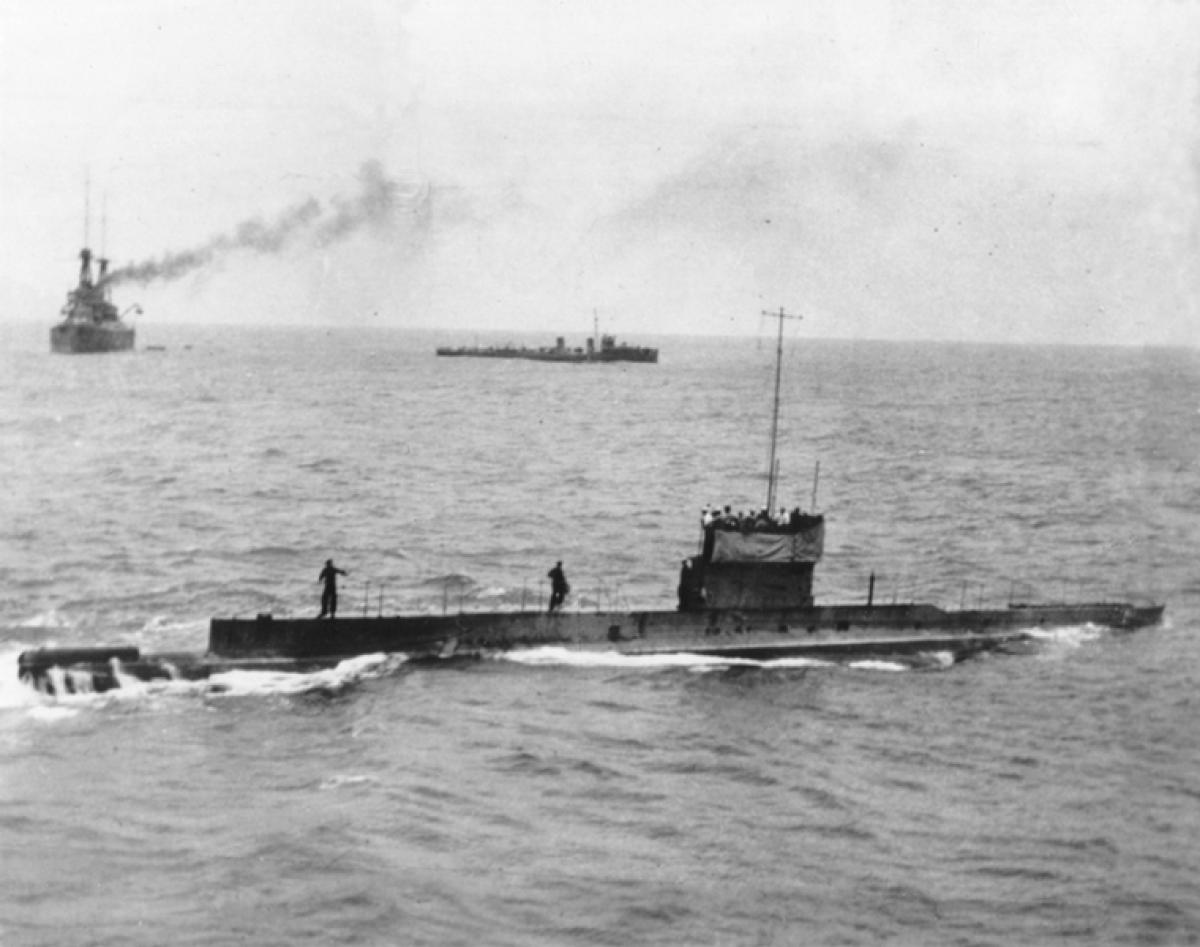Enduring Sea Mystery Solved: WWI Sub Located
Australia’s first submarine, HMAS AE1, has been found, ending a 103-year-old maritime mystery. The fate of the 800-ton E-class sub and her 35 crew members has remained one of the persistent unresolved enigmas of Australian and World War I naval history.
She was the first loss for the Royal Australian Navy and the first Allied submarine loss in World War I. One of two E-class submarines built for the fledgling Australian fleet, she was manned by Royal Navy officers with a mixed crew of sailors drawn from the Royal Navy and the Royal Australian Navy. Accompanied by her sister AE2, AE1 departed England in March 1914, transited the Suez Canal, and reached Sydney on 24 May. Although the boats remained surfaced for almost the entire delivery voyage, at the time it was the longest transit distance ever traveled by a submarine.
At the outbreak of World War I, AE1 joined the naval forces assigned to the capture of the German Pacific colonies. With AE2, she took part in the operations leading to the occupation of German New Guinea, including the surrender of Rabaul on 13 September 1914.
Then, on 14 September 1914, AE1 mysteriously was lost with all hands.
More than a dozen expeditions to locate the wreck have been conducted since the 1970s. The latest took place in the waters off the coast of the Duke of York Island group in Papua New Guinea in December 2017. The survey vessel Fugro Equator, equipped with advanced search technology, located an object of interest more than 980 feet deep. Upon further inspection, searchers confirmed it to be AE1.
Following the discovery of the submarine, those on board the survey vessel held a small commemorative service to remember the officers and sailors who lost their lives more than a century ago. Efforts are being made to contact the crew’s descendants.
The Australian government has announced it will work closely with the Papua New Guinean government to consider a lasting commemoration for the crew of AE1 and to preserve the site.
The information gained from this expedition and from the research to date should greatly assist in unraveling the mystery of the loss of AE1—now that the “where” has been solved, the “why” and “how” remain to be gleaned. The first images captured show the vessel is remarkably well preserved and apparently in one piece.
Call Issued for Vietnam ’68 Papers
Marking a half-century since a fateful year, five military historical nonprofit organizations have announced a call for papers on the ground war in Vietnam during 1968.
The Air Force Historical Foundation, the Army Historical Foundation, the Marine Corps Heritage Foundation, the Naval Historical Foundation, and the Foundation for Coast Guard History will host a symposium at Marine Corps University in Quantico, Virginia, on 15–16 November 2018. (Registration details will be announced this June.) It is the second of a planned series of symposiums on the Vietnam War; the first, covering the air war, was held in 2015.
The events of 1968 offer a wealth of material for study of the Southeast Asian conflict: the Tet offensive, the cessation of the Rolling Thunder campaign, the Marine defense of Khe Sanh, the battle for Hue, greater Navy and Coast Guard interdiction in coastal and riverine areas, better coordinated naval gunfire and air-to-ground support.
Scholars and veterans are encouraged to submit panel and paper proposals to Matthew Seelinger (matt.seelinger@army history.org) by 30 April 30. The proposal should include a 250- to 400-word paper abstract and a curriculum vitae or short autobiography. Panel proposals will be welcomed as well; please include a panel objective statement in addition to paper abstracts and CVs/bios. Paper and panel topics may involve any aspect of U.S. involvement in the Vietnam War during 1968.
Famous Decatur Painting Defaced by Phantom Kisser
What do you get when you cross an iconic painting from 1858 and lip gloss? Someone who’s kissed a 160-year-old antique that now needs some special conservation.
The oil painting, Decatur Boarding the Tripolitan Gunboat by Dennis Malone Carter, is perhaps the most famous artistic rendering of Old Navy hero Stephen Decatur in action. Depicting the gunboat battle that took place on 3 August 1804, it shows the moment when Boatswain’s Mate Reuben James positioned himself between Decatur and a Tripolitan’s sword. This celebrated artwork was on exhibit at the National Museum of the U.S. Navy when a staff member noticed that someone had defaced the painting . . . by smooching it.
Naval History and Heritage Command (NHHC) conservators Dave Krop and Yoonjo Lee went into action to ensure that no further damage had occurred.
“Damage is dependent on time,” said Lee. “How long has the lip gloss been on the surface of the painting? Another factor is the chemical formulation of the lip gloss. Over time, it can chemically change and react with the painting, causing further damage.”
Luckily, a cotton swab and mild enzymatic cleaner sufficiently dissolved the lip gloss without harming the surface of the painting.
“We were fortunate that this particular field treatment was fairly simple and went according to plan,” said Krop. “The project was accomplished in the gallery, with the painting remaining on display, without the use of chemicals or any disruption to visitors . . . This was an ideal outcome.”
The timely discovery of the illicit kiss also was key, said Krop. “If the gloss had remained undiscovered for many months, the outcome could have been different and may have required a more intensive conservation treatment in a controlled lab setting.”
—Mass Communication Specialist 1st Class Clifforrd L. H. Davis, NHHC




